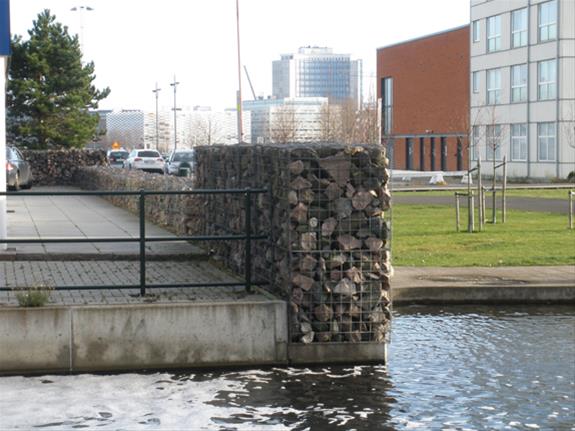Sustainable Urban Drainage (SUD) in Malmö, Sweden
Publications
Malmö, Sweden, author, 08/01/2012

The Western Harbour is a newly developed, residential area (Bo01) in close proximity to the water. Due to this proximity it is easier to manage the storm water, collect and distribute it to the sea, while it is easy to bring some of it back into the area for recreational purposes.
The most of the rainstorm water is gathered in the two important canals of the area and conducted to the sea towards the northern and southern directions.
The stormwater of the rest of the housing area is collected into gutters along the street (one on each side) and conveyed into the canals. These drainage gutters (max width: 25cm, max depth: 35 cm) are designed in conuction with gravels or vegetation strips (~30cm) along their length.
The whole drainage system is designed in an open view and interaction. In some areas the design and the shore of the canal imitate the natural morphology.
In the rest of the area there is a local water management system where the water is collected from the roofs and streets and conducted through open gutters to small ponds (wet basins), for storage and to rain gardens, for further infiltration. As mentioned above, at some locations in the canal system, small ponds have been introduced. These ponds are planted with wetland vegetation in order to get a filtering effect on the water. They also add an additional biologic value to the very densely developed settlement (Stahre, Blue-Green Fingerprints, 2008).
Infiltration is also achieved at the western building area where it is covered with permeable surfaces in order to slow down and reduce the amount of water before entering the canal system. The walkable, driving or bicycle surfaces are permeable pavements such as porous pavers while the non-walkable are gravel surfaces. There are also other permeable surfaces, such as recreational areas and parks, covered with soil and grass for better water percolation.
Finally, as can be noticed on the plan view, a vegetation strip runs along the canals on the eastern side and functions as a border and protection area for the residential area. In that way the water is filtered and evaporated in small amounts, before reaching the built area.
The described, open canal system in the area manages the stormwater and, at the same time, adds an aesthetic value to the area. The question to be asked is, how efficient is it when water from the drainage canals is discharged into the saltwater canal during heavy rain periods? How this mix of water types affects the biodiversity of the area and the quality of the water?
The filtering of rainwater from road surfaces is only achieved through “stonefences” at some points along the canal?
Finally, the issue remains, how sustainable of a solution is the plumbing of water in order to preserve a continuous water flow, in favor of aesthetics or artistic elements.
The presence of water in everyday life has an increased value and for that reason motivates people to care about the cleanness of the water and to apply methods of drainage individually, like green roofs, gravel surfaces etc.
Furthermore the function, management and efficiency of the rain storm water, this open system motivates people and increases community values.
References:
Stahre, Blue-Green Fingerprints, 2008
Backhaus A., Jensen M., Fryd O., Landscape elements for stormwater management and their greening potential
Pictures:
Plan 1 (source: Stahre, Blue-Green Fingerprints, 2008)
Images (source: Natalia Pantelidou, 2011)
published in Architravel_online architecture guide
http://www.architravel.com/architravel/news/use-of-sud-elements-at-western-harbour-in-malmo-sweden
Natalia Pantelidou is an International Partner of ArchiTeam in Copenhagen since December 2011.
Return